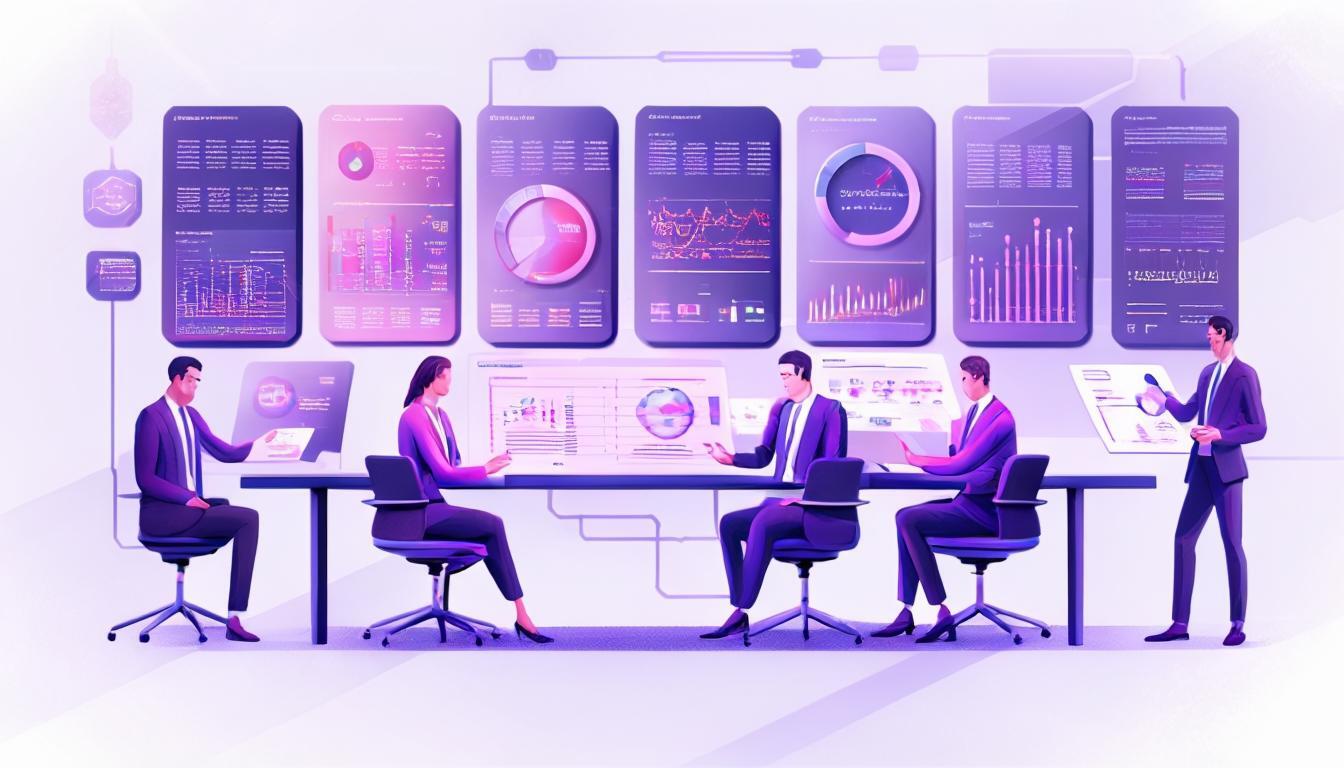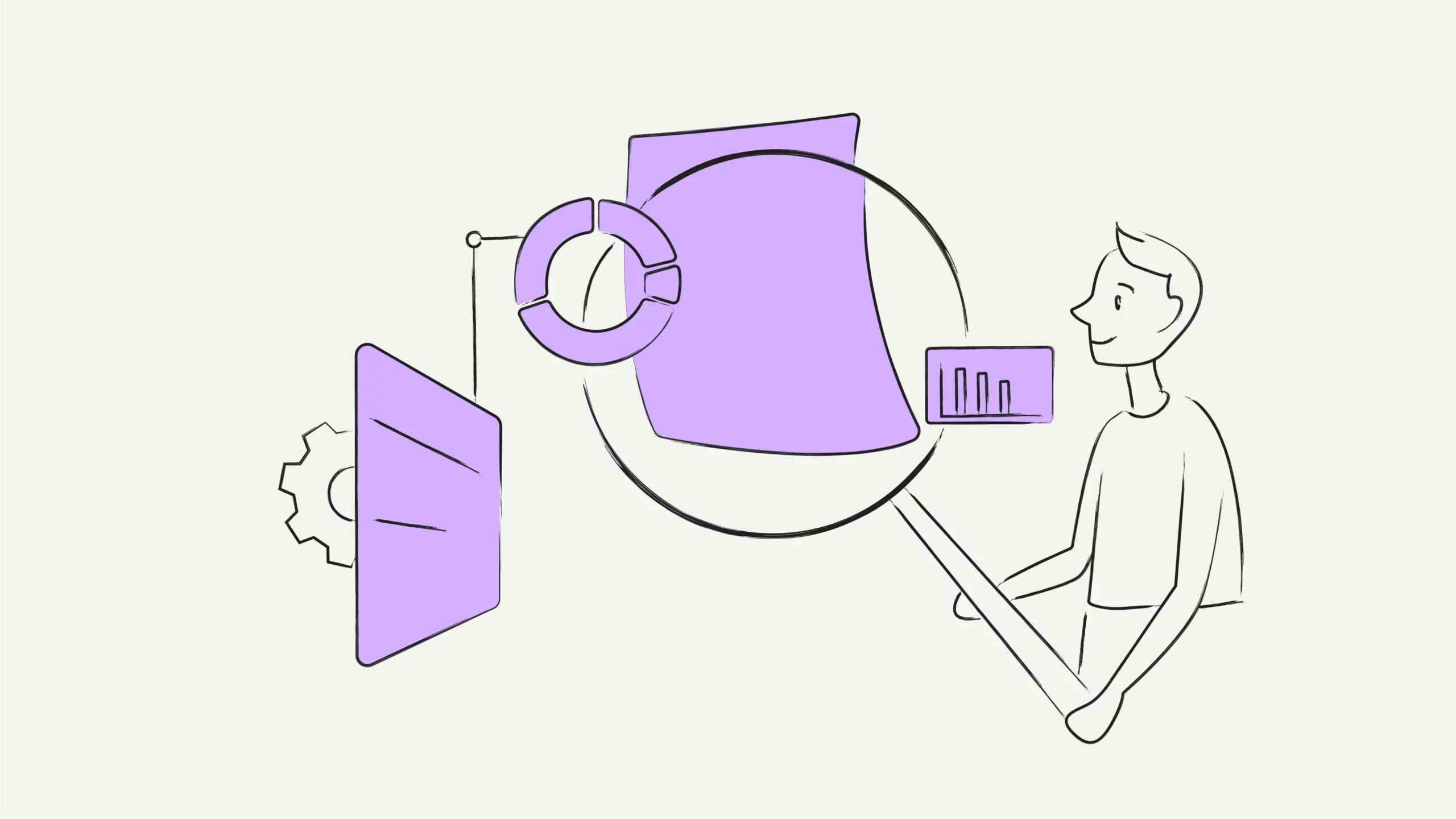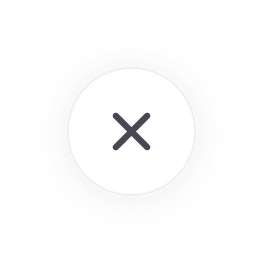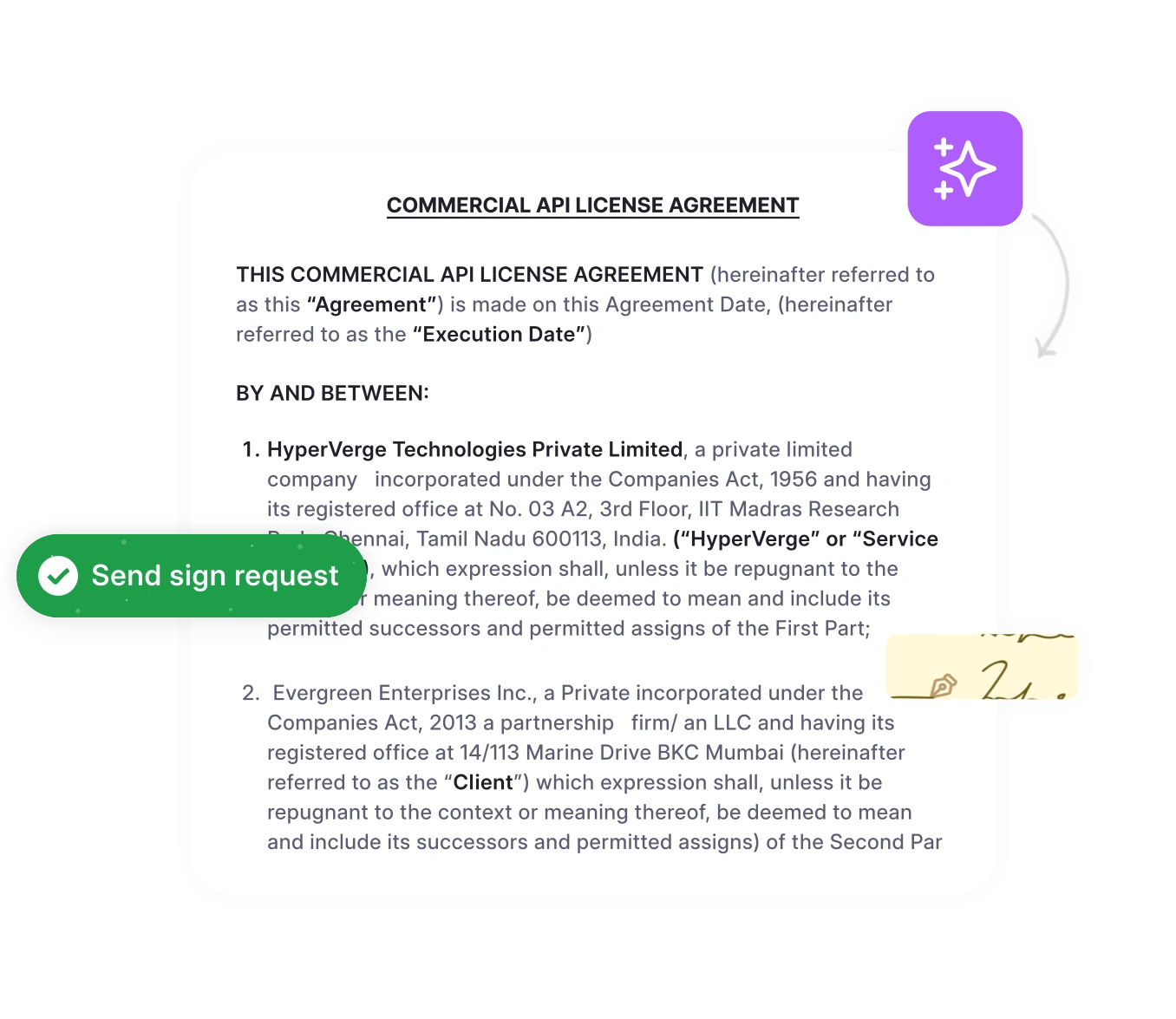Most organizations need help with contract visibility, which can lead to missed opportunities and unmanaged risks. Contract management reporting is critical in empowering businesses to make informed decisions based on real-time contract data.
Contract management reporting ensures that businesses can maximize the value of their contracts by providing insights into contract performance, compliance, and potential risks.
This guide explains the essential components, best practices, and key features of contract lifecycle management (CLM) reporting. This will help you streamline your contract processes and stay ahead of potential risks.
What is contract management reporting?
Contract management reporting is the process of tracking contract performance, compliance, risks, and efficiency throughout the entire contract lifecycle. It provides businesses with actionable insights by collecting, analyzing, and presenting critical contract data, helping them make informed decisions.
Contract reporting typically focuses on two key areas:
Legal compliance: Tracking notices, amendments, renewals, and change orders.
Commercial operations: Managing invoicing, discounts, and performance tracking.
Why is contract management reporting important?
The pandemic underscored the importance of a previously neglected stage in the contracting process: Post-execution. The phase that exposes the true value of contracts. Not tracking contracts post signatures blinds you to contractual opportunities and risks alike.
1. Never miss an obligation
Outdated systems put organizations at risk of missing critical obligations. Without smart contract reporting, tracking contract expirations, analyzing renewal success rates, identifying missed obligations, and proactively managing potential contract breaches is difficult. By incorporating data reporting, organizations can ensure that key contract dates, renewals, and obligations are easily tracked and reported, allowing for swift course correction and mitigating the impact of delays.
2. Collaborate frictionlessly
Without transparent contract reporting, responsibilities are undefined which can cause duplication of efforts, divisional silos, delays in signing, and strain collaboration. Teams tend to miss the larger organizational view and fail to see the downstream impact of contract lifecycle management activities.
3. Visualize contract performance
Without proper reporting, you’re missing out on clear contract performance metrics. A lack of data hinders visibility, obscures bottlenecks, and makes it difficult to evaluate contracting practices objectively. Custom reports generated by contract management systems offer tailored insights into specific contract performance metrics, helping businesses monitor compliance, track milestones, and evaluate contract efficiency against objectives.
4. Unlock opportunities and harness risk
No matter how bulletproof a contract is, it contains risks. Untapped opportunities, unfavorable clauses, and potential compliance breaches all snowball into lost revenue.
Effective contract compliance and reporting enhance value by avoiding:
Invoicing errors
Paying for undelivered service levels, deliverables, or outcomes
Paying for goods and services that are required
Unutilized credits and negotiated discounts
Non-compliance with payment terms that affect cashflows
Unbilled work
What are the top features of contract management reporting?
Contract management systems offer a variety of reporting functionalities that help businesses manage and analyze their contracts more effectively. Below are the top features of CLM software for contract reporting:
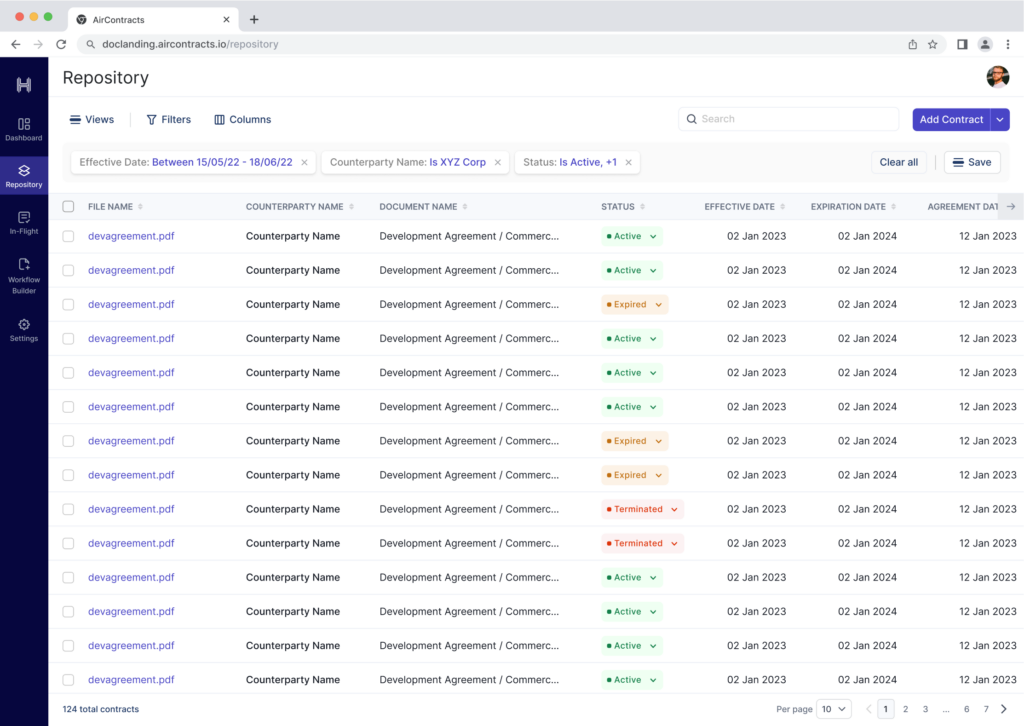
1. Dashboards and analytics
Custom dashboards generate custom visualizations of key contract data. They are quickly navigable, efficient, real-time, and tailored to specific use cases. Visualize complex data in digestible formats like bar graphs, pie charts, line charts, and more. It also highlights key performance indicators like contract value, renewal rates, and compliance status.
2. Auto-extracted metadata
Metadata auto-extraction is an extractive AI functionality that pulls key contract information points like dates, parties involved, terms, and conditions. Leveraging AI and NLP capabilities, it minimizes human error and speeds up manual contracting. These systems ensure data consistency across the contract portfolio.
3. Granular filters
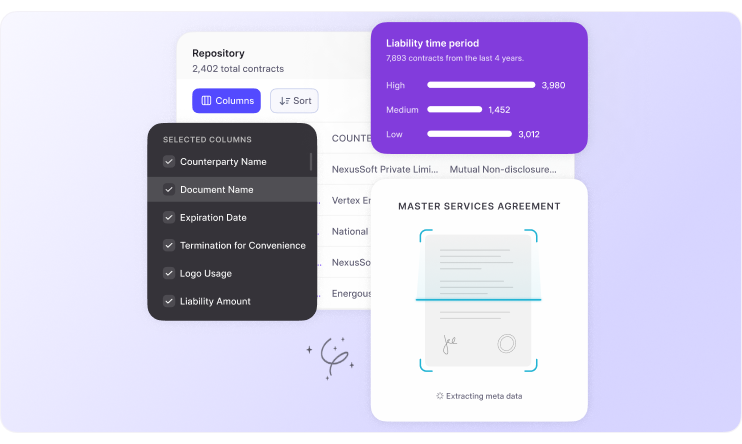
Granular filters sort and analyze contract information and data with specific criteria for precision and customized queries. They sift through the performance of different contract types like NDAs, sales agreements, or service contracts. They can also be filtered by department, risk level, and contract value.
4. Contract summaries
Brief overviews of key contract data which allow for swift contract retrieval and informed decision-making. The key points may include contract name and type, counterparty information, key dates, contract value and terms, and current status.
Deploying AI to interpret and summarize contracts helps accelerate reviews and speed up decision-making. As per a World Commerce and Contracting Report, AI contract summaries are 98% accurate compared to human-based analysis, which is 92% accurate.
5. Contract performance assessment
This functionality evaluates how well a contract is performing against objectives and metrics. It monitors compliance and other contract milestones to inform decisions on renewals, terminations, and renegotiations.
6. Automated reminders for key contract dates
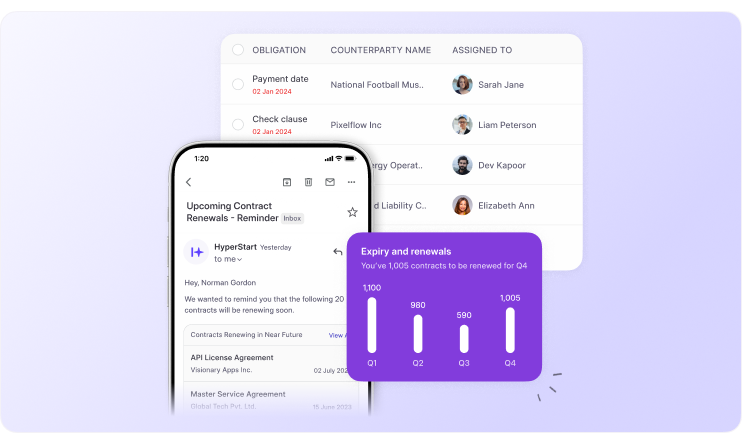
Reminder alerts are critical for renewals, expirations, milestones, and key dates. This allows for proactive management of contract deadlines and compliance and reduces the risk of penalties and contract breaches.
7. Custom contract & contract family reports
Contract family reporting groups related contracts under themes like vendor contracts or SLAs to generate contract management reports that evaluate the collective performance of key terms, risks identified, and communication history. This caters to targeted analysis of specific contract data sets and identifies trends and opportunities for standardization and renegotiation within these contract groups.
Contract Management Reporting At Your Fingertips
Get real-time insights into contract renewal tracking. Navigate obligations with confidence.
Book a Demo6 Steps of evaluating the CLM solution for contract management reporting
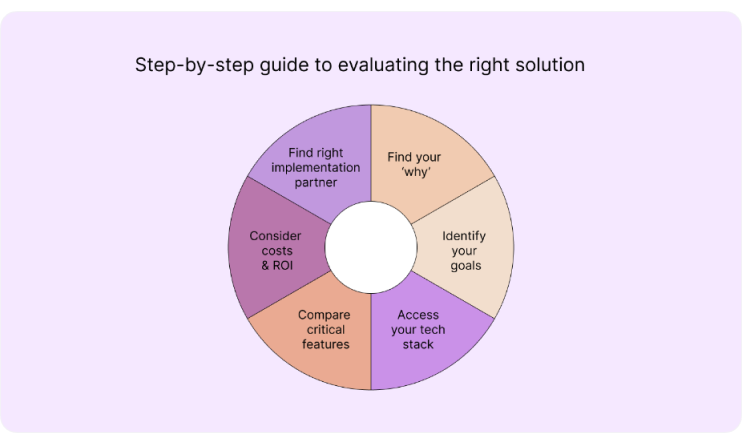
Each business has unique operations and your chosen contract management software must align with your specific processes as closely as possible.
As you scout for CLM solutions, you’ll need to look for one that satisfies both your business and partners with short-term simplified operations and long-term competitive intelligence. Here are proven methods to evaluate the right contract management software.
Step 1: Understand your business needs and establish a clear purpose
Consult with stakeholders and key users to understand what each team requires from new contract management software solutions. For the solution to deliver results that align with each team’s unique needs, get on the drawing board to map out current processes. Engage with individuals who interact with high-volume contracts regularly to get the essence of your teams’ needs:
Teams responsible for managing post-award contract operations like sales, legal, and contract managers.
Teams heavily dependent on contract data, obligations, renewals, and other features of the CLM like finance, procurement, and counterparty teams.
Gain insight into how each team engages with contracts, contract data, and the post-signature contract lifecycle management process. Take the opportunity to evaluate the obstacles in their current systems and inquire about the changes that could be useful to specific stakeholders.
Then, bring your feedback to your leadership team to uncover overarching trends and priorities. Leverage the insights from all levels of your organization to establish the ‘ideal state’ for your new contract reporting processes.
Step 2: Establish clear objectives and desired outcomes
Now that you have considered everyone’s input, it is time to clearly define the objectives and results you want your new CLM to achieve. Create a comprehensive list of qualitative and quantitative KPIs that consider the needs of individual users and the overall business goals. To identify these goals, ask questions like:
Are you considering implementing a CLM for the first time or transitioning from a current system?
What objectives are you striving to achieve and how can you effectively track progress?
Could contract performance management and reporting processes be improved in any areas?
Are there any challenges you want to address that lack the necessary capabilities?
How much time do you have to implement a new contract reporting mechanism?
Consider what types of contract management reports and valuable insights are essential for buy-ins. Align insights from the team with your business objectives. While a CLM can bring immense value to your business, it may not be the cure-all for every challenge you face and the features you seek. Develop a comprehensive checklist of essential features and desirable attributes for each stakeholder.
Step 3: Evaluate your current tech stack and integrations
Consider how potential contract management software solutions align with your existing tech stack. Many CLM platforms may also replace or emulate specific tools that make old systems obsolete, guarantee smoother operations, and save potential costs.
Proactively assess and address any potential integration or compatibility issues. Get a comprehensive mitigation strategy from this stage to the demos of the PoC stage. By doing so, you can avoid unforeseen costs and surprises that may arise when you commit to your new contract management software solutions.
Having a unified system and contract management processes for improved cross-team alignment is beneficial. Evaluate the current tech stack to see where else CLM can step in with relevant integrations. Here are a few examples:
CRM & Sales: Salesforce, Zoho, Hubspot, FreshSales, Greenhouse, Lever
Storage: Google Drive, Box, Dropbox
Signing: DocuSign, Adobe Sign, HelloSign
Workflow management: Jira
Collaboration: Slack, Teams, Gmail
Step 4: Prioritize key features for your use case
It’s time to delve into specific features and capabilities a powerful CLM intelligence system should provide. While your prioritization will be based on the goals you identified in step two, there are specific features and functions that CLM platforms market that reflect their unique capabilities and can add value to your specific use cases. Then map out where you need smoother workflows across the whole contract lifecycle. A few possible areas:
Unified repository
Workflow automation
Contract obligation tracking
Compliance & security
Contract creation & drafting
Version control & audit trail
Step 5: Weigh costs against long-term ROI
Take a moment to reflect on the long-term benefits of addressing your legal team’s most pressing challenges. How will overcoming these obstacles ultimately impact your business’s overall value and success? Research has shown that contract management solutions have caused:
60% faster contract cycles (Microsoft)
40% reduction in contract admin costs (Aberdeen)
10–30% savings in operating costs (Goldman Sachs)
Contract management solutions with a competitive AI moat can open up endless possibilities for exponential growth for your organization. Thinking big and long-term is crucial. Cheaper options offer fragmented functionalities but little opportunity for scale and customization.
When searching for a CLM, look for ones that provide add-ons and comprehensive product ecosystems. The features will assist in supporting the growth of the company and aid in managing various aspects of your unique internal operations.
Step 6: Select the right CLM implementation partner
As you approach the critical moment of making your final decision to purchase a CLM, it becomes essential to vet your CLM partner. To help you get started, here are a few questions to vet externally:
Can the vendor fulfill your implementation needs?
How soon can you get started?
How soon are you likely to realize value?
Do you have an adoption strategy to enforce right from the start?
Best 3 practices in contract management reporting
Effective contract reports are tailored to specific business objectives. Start with defining KPIs that align with the overall contracting strategy. The next step is to draw up an executive brief with actionable insights for leadership review and decision-making.
As AI and automation shape the CLM landscape, here are the top 3 best practices to follow for effective contract management reporting regardless of which vendor you choose.
1. Centralize and standardize contracts for easy access
It is essential to get a better hand on where the contracts are, how to access them, and what’s in them. Appropriate priorities and segments help you pay attention proportionately to the risks and challenges involved.
Meanwhile, digitization and migration of contracts into a cloud-based searchable AI-powered contract repository have empowered users to access contract information anywhere and at any time. As the new cornerstones of good contracting, they can be filtered and searched based on key contract data and segmented into contract families.
They eliminate the risk of duplicative work and missed obligations on account of scattered agreements across departments and file formats. AI filters serve as great tools to retrieve contracts in a second.
2. Leverage contract intelligence to maximize value
Without the right tools, any insights from aggregated data in spreadsheets tend to stay trapped within them. This prevents organizations from leveraging opportunities for learning, optimizing contract management processes, or tracking smart renewals. Contract reporting and analytics enable businesses to extract valuable insights, pay close attention to the scope of contracts, and drive better decision-making through advanced intelligence.
The true success of your business partnership lies not in signing a deal but in the tracking and consistent fulfillment of obligations. Advanced intelligence helps you to track and report key milestones, contract status, deadlines, performance metrics, and upcoming actions for proactive management, integrate risk management, optimize vendor and supplier contracting, and maximize opportunities.
3. Use data visualization for clear decision-making
Raw data is complex to analyze and interpret, and manual reporting via spreadsheet is slow and ineffective. Data visualization tools today transform overwhelming data into easily digestible charts, graphs, and interactive dashboards. This allows for clear communication and stronger narratives for decision-making.
With data visualization tools, you can extract learnings like what types of contracts are open at each stage, where in the lifecycle the contracts are stuck, and who is working on what. Besides process-related information, you can also visualize key contract data like risk exposure, liabilities, governing laws, contract milestones, and other obligations.
Contract data integration, tracking & reporting, and visualization are best practices poised to be game changers. Different players offer different modules and product functionalities that cater to these functions uniquely. As these practices shift the focus from reactive to proactive, they challenge the idea that post-execution functions are nice to have.
What are the essential components of contract management reporting?
The essential components of contract management reporting:
| Component | Description | |
| 1 | Executive summary | An executive summary spells out key metrics and insights at a glance for the leadership to understand contract portfolio health, and key risk indicators, and make contractual decisions. |
| 2 | Company-wide contract status | This section covers an overview of active or inactive contracts across the negotiation, approval, execution, and renewal stages. It also indicates potential compliance issues to address risks proactively. |
| 3 | Contract authoring metrics | These numbers specify the number of new contracts, the average contract-drafting time, and the number of contracts delayed beyond the initial deadline. |
| 4 | Approval and negotiation status | These metrics indicate approval backlogs, average approval time, and outstanding negotiations to help accelerate deal closures. |
| 5 | Execution rates | This section provides insights into the number of contracts executed, electronic signature adoption rate, and pending signature status. Each of these metrics indicates areas for potential improvement in timely execution. |
| 6 | Renewal rates | Renewals are crucial instruments for maintaining recurring revenue and customer loyalty. Key metrics to track are upcoming renewals, renewal success, and missed rates. |
| 7 | Termination rates | This section specifies details on terminated contracts and reasons for termination. |
| 8 | Performance metrics | Diving into performance indicators like contract cycle time, compliance rate, renewal rate, and contract termination rate. |
| 9 | Recommendations | This section prescribes actionable insights to streamline contract creation and approvals with automation, develop standard and compliant contract templates, and centralize data and contract reporting abilities. |
Why use HyperStart CLM for contract reporting
HyperStart CLM’s end-to-end contract management solution helps you go beyond contract storage, work planning, and contract benchmarking. Its primary value lies in its advanced AI engine that immediately extracts contract metadata, including critical financial data, to provide insights that drive better business outcomes and informed decision-making.
With HyperStart, you can sweep through your entire repository in seconds to unlock hidden insights that catapult you from reactive reporting to proactive planning and optimization. Identify contract opportunities, risks, and bottlenecks today.
Contract Management Reporting At Your Fingertips
Get real-time insights into contract renewal tracking. Navigate obligations with confidence.
Book a Demo







